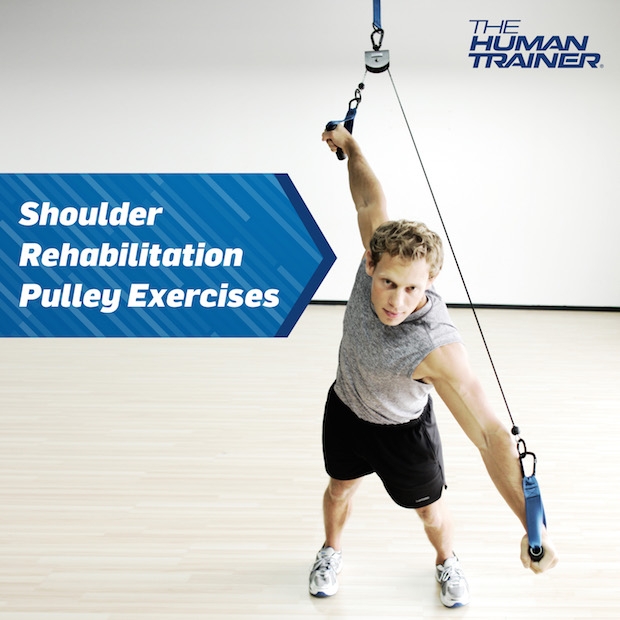Shoulder pain can be extremely debilitating, limiting your ability to function normally. It may prevent you from doing activities you enjoy, or worse, stop you from being able to work. In a worst case scenario you may even have trouble doing basic tasks like brushing your teeth or getting dressed. It can also stop you from having a proper night’s sleep.
If you have shoulder pain or have had shoulder surgery physical therapy or another form of rehabilitation therapy may be what’s needed to get back on track. A rehabilitation professional will evaluate your situation and come up with a plan of action to help you return to a normal function level, quickly and safely.
Common injuries and problems that may cause shoulder pain include, but are not limited to:
• Frozen shoulder
• Shoulder bursitis
• Rotator cuff injury or surgery
• Dislocated shoulder
• Proximal humeral fracture
Rotational Pulley to Improve Shoulder ROM
Exercise has been proven to be the most effective method to improve arm function if you have shoulder pain or have had shoulder surgery. Pulley exercises are often prescribed to help you improve your shoulder range of motion (ROM), strength, and mobility. Performing gentle range of motion exercises with a pulley system may be your initial steps to restoring normal mobility and function to your painful shoulder.
The Human Trainer Rotational Pulley is extremely versatile and can be hung over a door, from the ceiling, or virtually from any solid structure using the versatility anchors, providing gentle, passive ROM to your shoulder. Shoulder pulleys are used in many rehabilitation clinics, and you may wish to purchase your own pulley so you can perform shoulder ROM exercises at home.
Pulley Shoulder Exercise Examples:
There are simple exercises that can be performed using your pulley. Make sure you check with your physical therapist, or other health professional before starting any exercise program.
Shoulder Flexion. Hang your pulley over a door or overhead and stand with your back to the door or anchor point. Hold the handles of the pulley in both hands, and pull the handle on your non-painful side down. When you do this, the other hand will slowly rise up. Allow your injured shoulder and arm to move forward and up while keeping your elbow straight. Lift your arm as far as possible before the point of feeling any pain.
When your arm is high enough to feel slight strain in your shoulder, hold this position for 2 seconds, then use the pulley to allow your arm to slowly return back down to your side. Repeat this motion 10 times for your painful shoulder, and move on to the next exercise.
Shoulder Abduction. Continue standing with your back to the door or pulley anchor point. While holding both handles of the pulley, gently pull the handle down in your hand on the non-painful side. As you do this, allow the pulley to raise your painful shoulder and arm out to the side. Be sure to keep your elbow straight as you lift your arm. Stop if you feel sharp pain.
When you feel gentle tension in your shoulder, stop and hold this position for 2 seconds. Then, use your non-painful hand and arm to slowly lower your painful arm and shoulder down to your side. Repeat this exercise 10 times. Move on to the next exercise.
Internal Extension. With your back once again to the door or anchor point, hold both handles of your pulley system. Your painful shoulder should be rotated inward slightly and that hand should be resting comfortably behind your hip or lower back.
Use your non-painful side to pull the pulley handle down in front of you. As you do this, the hand of your injured side will slide up your back. Do this until a gentle stretch is felt. Hold this position for two seconds. Then, slowly allow the arm behind your back to lower back down to the area just behind your hip. Repeat this exercise 10 times.
As you progress with your shoulder treatment, your health professional may prescribe more advanced exercises. A typical progression from shoulder pulley ROM exercises would be to perform active ROM exercises, and finally, shoulder strengthening exercises.
Be sure to ask your therapist if these exercises are appropriate for your specific condition, and how frequently you need to perform them.
If the health Practioner you’re seeing feels that you’d benefit from home-use of a pulley system, you may wish to purchase a set. CLICK HERE for more info.
Resources: physicaltherapy.about.com, franklinorthopedics.com





 Payments powered by:
Payments powered by:

